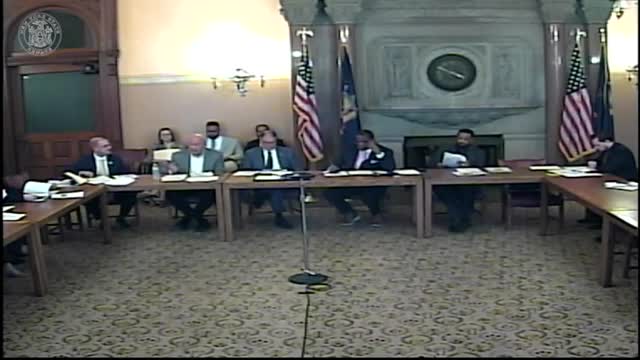New York faces electrician and transformer shortages hindering energy transition plans
March 18, 2025 | 2025 Legislature NY, New York
This article was created by AI summarizing key points discussed. AI makes mistakes, so for full details and context, please refer to the video of the full meeting. Please report any errors so we can fix them. Report an error »

The Senate Standing Committee on Energy and Telecommunications convened on March 18, 2025, to address critical challenges facing New York's energy transition, particularly the pressing shortages of electricians and transformers. These shortages pose significant barriers to implementing the state's ambitious energy plans.
Committee members highlighted the electrician shortage as a major hurdle, emphasizing that without sufficient skilled labor, the transition to renewable energy sources could stall. Additionally, a recent article in IEEE Spectrum pointed out a transformer shortage, which is essential for interconnecting renewable energy sources to the grid. The lack of these critical components could hinder the execution of planned energy projects.
Another significant concern raised during the meeting was the cost-effectiveness of heat pumps compared to natural gas. A committee member shared personal experiences with a geothermal system, revealing that operating heat pumps can be more expensive than traditional gas heating, especially during extreme weather conditions. This raises questions about the viability of heat pumps as a widespread solution for energy efficiency.
The discussion also touched on the state's fossil fuel energy load, which has remained largely unchanged since 2019. While electrifying the energy system is theoretically beneficial, the committee noted that without adequate energy storage solutions, such as batteries, the system could fail to meet demand. The estimated cost of necessary battery storage solutions is staggering, at around $3.4 trillion, and these batteries have a limited lifespan of only 8 to 10 years.
In conclusion, the committee underscored the importance of addressing these challenges to ensure a successful transition to renewable energy. The discussions highlighted the need for realistic planning and investment in both workforce development and energy infrastructure to support New York's energy goals. As the state moves forward, stakeholders will need to consider these practical implications to avoid potential setbacks in the energy transition.
Committee members highlighted the electrician shortage as a major hurdle, emphasizing that without sufficient skilled labor, the transition to renewable energy sources could stall. Additionally, a recent article in IEEE Spectrum pointed out a transformer shortage, which is essential for interconnecting renewable energy sources to the grid. The lack of these critical components could hinder the execution of planned energy projects.
Another significant concern raised during the meeting was the cost-effectiveness of heat pumps compared to natural gas. A committee member shared personal experiences with a geothermal system, revealing that operating heat pumps can be more expensive than traditional gas heating, especially during extreme weather conditions. This raises questions about the viability of heat pumps as a widespread solution for energy efficiency.
The discussion also touched on the state's fossil fuel energy load, which has remained largely unchanged since 2019. While electrifying the energy system is theoretically beneficial, the committee noted that without adequate energy storage solutions, such as batteries, the system could fail to meet demand. The estimated cost of necessary battery storage solutions is staggering, at around $3.4 trillion, and these batteries have a limited lifespan of only 8 to 10 years.
In conclusion, the committee underscored the importance of addressing these challenges to ensure a successful transition to renewable energy. The discussions highlighted the need for realistic planning and investment in both workforce development and energy infrastructure to support New York's energy goals. As the state moves forward, stakeholders will need to consider these practical implications to avoid potential setbacks in the energy transition.
View full meeting
This article is based on a recent meeting—watch the full video and explore the complete transcript for deeper insights into the discussion.
View full meeting
